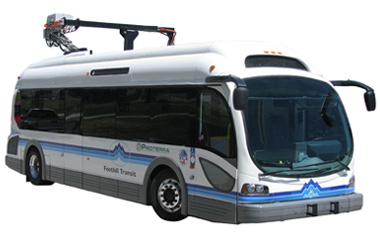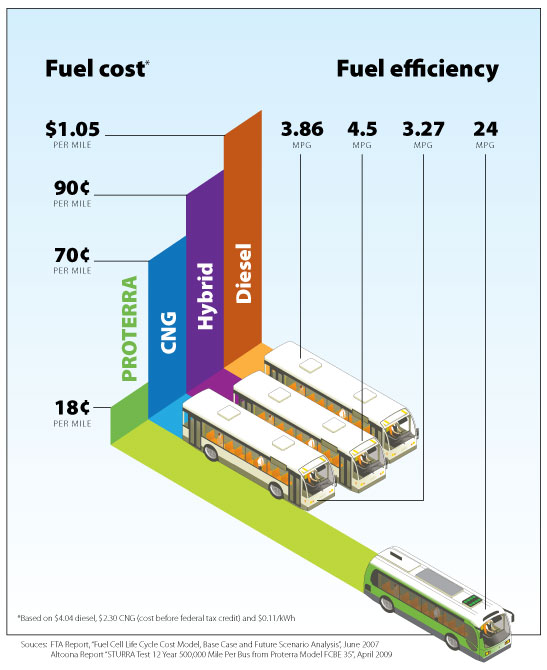May 25, 2014 – For those of you still using the British Imperial Unit, the over 1,1o0 translates to 700 miles. The route traveled simulated an urban setting and a typical commuter series of runs over a day. The Proterra EcoRide (TM) BE35 bus averaged 47 kilometers (29 miles) per hour with air conditioning system fully engaged throughout. It had to stop to recharge but Proterra has developed a quick charger that takes no more time to charge a bus battery than it takes to charge one on a smartphone.
Proterra buses today operate in San Antonio, Worcester, Reno, Stockton, Pomona and Tallahassee. The company has orders from Nashville, Louisville and other U.S. cities. This performance should help fill the order book.
The EcoRide bus produces no exhaust emissions and therefore is a truly green technology as long as the source of its electricity isn’t coming from a coal-fired or other petroleum-based power source. And even if the source of the electric charge is generated by a fossil fuel burning plant EcoRide produces 44% less carbon than hybrid gas-electric, natural gas and diesel buses.
The EcoRide stretches 10.7 meters (35 feet). It features a composite body providing up to 40% weight reduction from conventional steel or aluminum buses. The battery, a proprietary TerraVolt (TM) Energy Storage System, can be charged in 5 to 10 minutes and fits within the floor structure of the bus to create a low centre of gravity. The motor is a single UQM PowerPhase (R) 150 permanent magnet motor that is rated at 150 Kilowatts continuous power, generating 650 Newton meters of torque and featuring a 3-speed transmission. Regenerative braking helps recapture energy during operation.
So how did the bus get recharged while driving the 1,100 kilometers? Proterra have developed an en-route charging system they call FastFill (TM). The bus pulls into a terminal where it automatically can connect overhead (see picture below) while passengers are leaving and getting on for the next leg of the route. FastFill can go from zero to 95% charge in as little as six minutes without any exceptional connection or boost in power from the local grid.
Cost for this technology is about the same for a city as a diesel-hybrid bus. And over the operational life (estimated at 12 years) would save a transit authority more than $430,000 U.S. in fuel and maintenance costs. And those saving don’t include the reduced carbon emissions and the incalculable value that provides.











Nice post, Len! Most encouraging news for people like yours truly who make an effort to use Mass Transit and cheer for ways to make that option more attractive to others! I intend to share this article further!
Many Thanks,
Jay